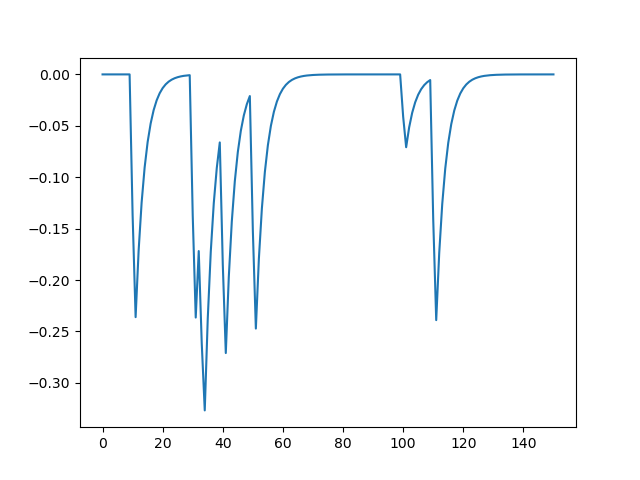Can you use deconvolution to convert these decaying impulses back into impulses?
Proof of concept:
import numpy as np
from scipy import signal
import matplotlib.pyplot as plt
impulses = np.zeros(200150)
for
times idx= in (10 [3, 30 20, 3330, 40, 45, 50, 110):55, 80, 90]
heights = [-8, -7, impulses[idx]-1, =-9, -1
impulses[100], =-2, -0.31, -8, #-1]
impulses[times] Different= heightheights
b, a = signal.butter(1, 0.104)
filtered = signal.lfilter(b, a, impulses)
fig, ax = plt.subplots(3, 1, sharex=True)
ax[0].plot(filtered[:151])
ax[0].set_xlim(0, 100)
ax[0].set_title('Original')
impulse = -signal10*signal.unit_impulse(50)
template = signal.lfilter(b, a, impulse)
ax[1].plot(template)
ax[1].set_title('Template')
deconvolved, remainder = signal.deconvolve(filtered, template)
pltax[2].plot(deconvolved)
pltax[2].plotset_title(template'Deconvolved')
Original:
Deconvolution template:
Deconvolved:
Then they are separated from each other and you can count their heights and events more easily.
Depends what the properties of the original bumps are, but they look like lowpass filtered impulses, which would mean they are all from convolution with the same impulse response, so this should work?




